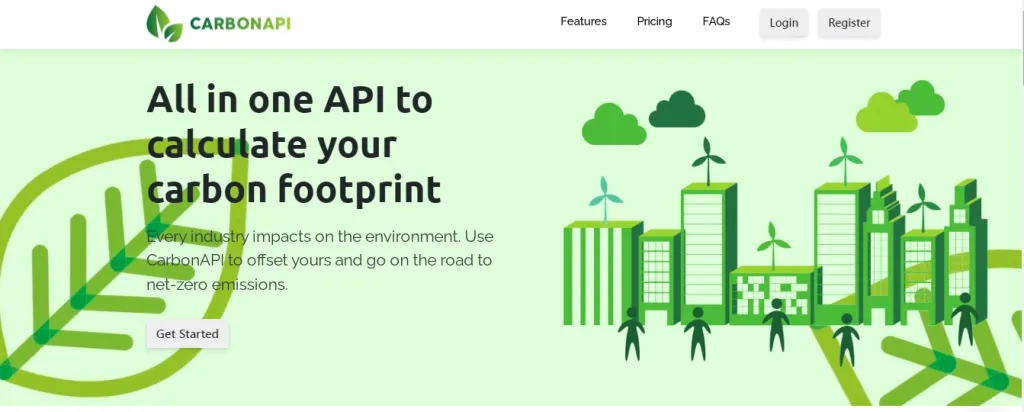Excessive emissions of this colorless, odorless gas composed of oxygen and carbon are one of the main causes of global warming. A problem caused by human activity and aggravated by the long persistence of CO2 in the atmosphere. Although the emissions generated by an individual are not the same as those generated by activities such as transportation, it is now possible to measure the carbon footprint with technologies such as APIs.
How CO2 In The Atmosphere Has Increased And Why That’s Bad
Carbon dioxide (also known as carbon dioxide) ‘inhabits’ the atmosphere at an average rate of 380 parts per million. Over the last 800,000 years, the concentration of CO2 in the atmosphere fluctuated between 170 and 330 parts per million (very acceptable levels for the sustainability of the planet), but since the last 170 years, and at a greatly accelerated rate over the last three decades, it has skyrocketed to values that now reach 415 parts per million.
CO2 emissions have multiplied and have consequences. It is a gas that contributes to global warming, although it is not the only one. Other natural gases (methane, nitrous oxide) or man-made gases (fluorinated gases) are also part of the so-called greenhouse gases (GHG). In fact, it is their increase in the atmosphere that triggers climate change, the climate crisis or the climate emergency. These are three closely related terms used to describe the global warming the Earth is experiencing.
Official statistics confirm that CO2 emissions have not fallen in recent years (except for months of confinement and the drastic drop in activity in many countries due to the pandemic). Of course, not all areas of industrial activity emit the same quantities into the atmosphere. Emissions are mainly distributed among five sectors: transport (28%), industry (26%), electricity generation (23%), buildings (13%), and agriculture (12%). Not to mention fossil fuels, which are the main source (80%) of GHGs.
What Is The Carbon Footprint And How Can It Be Measured?
The trail of greenhouse gases (GHG) left by human activities is known as the carbon footprint. This environmental indicator measures both direct and indirect emissions of compounds such as methane (CH4), nitrogen oxide (N2O), hydrofluorocarbons (HFCs), perfluorocarbons (PFCs), sulfur hexafluoride (SF6), and, above all, the most abundant and the one that has contributed most to global warming since 1990: carbon dioxide (CO2).
Companies often have the option of reducing or offsetting their carbon footprint by improving their energy efficiency, consuming 100% renewable energy, carrying out awareness campaigns, investing in environmental projects, paying green taxes, or buying tons of CO2 on the international emissions market, among other actions.
Like individuals, organizations also engage in activities that produce greenhouse gases. The corporate carbon footprint measures all GHG emissions of companies and their scope, whether they are direct and can be controlled or not. This information can be easily provided by integrating a Carbon Footprint API into working platforms. An API like CarbonAPI even allows you to share the results on a website.
Why CarbonAPI
CarbonAPI is undoubtedly a fundamental acquisition for companies of all kinds to contribute to the fight against climate change. This API allows you to accurately measure the emissions of different areas of the company for qualitative analysis. With this information, it is possible to make appropriate policies to reduce carbon emissions. With the help of the API you can evaluate the impact of these policies.
CarbonAPI has a user-friendly interface that developers love. It is compatible with the vast majority of programming languages, thus with almost any digital platform. Therefore, it will be very easy for you to show the results of your policies to third parties, for example by integrating this API into a website. Don’t wait to get started with the change. Use CarbonAPI and go green!



